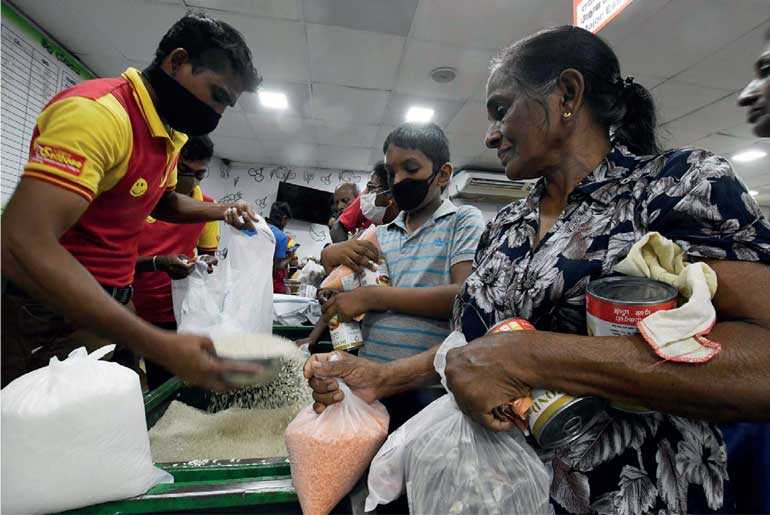Saturday Nov 15, 2025
Saturday Nov 15, 2025
Friday, 27 March 2020 00:00 - - {{hitsCtrl.values.hits}}


John Ionnidis, Professor of Medicine, Epidemiology and Population Health, of Biomedical Data Science and of statistics at Stanford University and Co-Director of Stanford’s Meta-Research Innovation Center  has suggested that our “once-in-a-century pandemic” could also be a “once-in-a-century evidence fiasco.”
has suggested that our “once-in-a-century pandemic” could also be a “once-in-a-century evidence fiasco.”
As our governments grapple with the best response, neither alarmism, nor unchecked paranoia nor denying the danger nor irresponsible negligence can be allowed to hold sway.
Professor Ionnidis points out “we lack reliable evidence on how many people have been infected with SARS-CoV-2 or who will continue to be infected.”
His challenge: if the pandemic actually begins to dissipate in weeks, draconian measures will have been all to the good (short term extreme distancing and lockdowns for example). But how will we judge if we are doing more harm than good?
Vaccines or affordable treatments he argues could be many months or even years away. On such timelines, the cost of long-term lockdowns are unknown, but almost certainly unsustainable.
We need rational forecasting
Current data he says is unreliable due to in part to limited testing (we don’t know if we are failing to capture infections by a factor of 3 or 300, consider India). No country currently has reliable data on the prevalence of the virus in a representative random sample of the general population – yet this is critically needed for any rational forecasting.
This “evidence fiasco” also creates uncertainty about the risk of dying from COVID-19. The WHO 3.4% claimed rate is meaningless he says as those who are treated are disproportionately those with severe symptoms and bad outcomes. And given limits on health systems, further such selection bias may occur.
The only situation we know of where an entire, closed population was tested was the Diamond Princess cruise ship and its quarantine passengers. The case fatality rate there was 1.0%, but even there, this was a largely elderly population, where death rates are higher.
A possible projection
If we take Diamond Princess’ mortality rate, project it onto the US population, factoring in numerous variables of uncertainty, the Professor’s expert “estimate” is the case fatality ratio in the general US public would be likely to vary between 0.05% to 1%, a very large spread.
If 0.05%, that is lower than seasonal influenza. If that were the case, or close to it, locking down the world with staggering social and financial consequences he says would likely be “totally irrational.” It would be like an elephant attacked by a house cat. In frustration, trying to avoid the cat he points out, the elephant accidently falls off a cliff and dies.
Some argue that it cannot be that low, pointing to the fatality rate in elderly people. But even so-called “mild” or “common-cold” type coronaviruses known for decades can have fatality rates as high as 8%. A Dutch commentator pointed out that in the Netherlands, the third highest cause of death, after cancer and circulatory illnesses, are respiratory illnesses like the flu, annually!
Says Professor Ionnidis, “In an autopsy series that tested for respiratory viruses in specimens from 57 elderly persons who died during the 2016 to 2017 influenza season, such viruses were detected in 18% of the specimens, while any kind of respiratory illness was found in 47%.” Bacteria are often superimposed. A positive test for coronavirus does not necessarily indicate that virus is always responsible for a patient’s demise.
Rates and responses
If, as the Professor argues, we take a mid-range from the Diamond Princess analysis and say 1% of the US population gets infected (about 3.3 million people), this would translate to 10,000 deaths. Certainly horrifying, but far less than the annual 60,000 from the “expected” flu or “influenza-like illnesses.”
In other words, if this were correct, that number would normally be buried within the tally of such illnesses, leading us to believe we had a worse flu season than usual.
The other projection is that current death rates will multiply into the hundreds of thousands or millions, catastrophically around the globe. Asks the professor, “Is that a realistic scenario, or bad science fiction?”
The way to answer this in his discipline would again be to have the current prevalence of the infection in a random population sample and to repeat this at regular time intervals. Sadly, this is information we don’t have.
But in its absence, prepare-for-the-worst scenarios, if they were to extend say 18 months globally would bankrupt governments (including of the largest economies of the world), wreck virtually every business in every major economy, disrupt supply chains and create critical shortfalls of food, medicine and other essential items.
Nor can we predict over such a protracted period, the impact on society, mental and emotional health, potential for desperation breeding crisis, unrest, civil strife, and a meltdown of the social fabric.
Courage, compassion and prudence
Let’s first admit something. “Flattening the curve” if health systems are overwhelmed as many are starting to argue (including this author in a companion article), can make matters worse, as it extends the period of practitioners being burned out and systems overwhelmed, and keeps other treatments for other life-threatening situations from being reliably available in a timely manner.
And beyond “suppression” the Professor argues, as does NY Times columnist Bret Stephens, a former Pulitzer Prize winner, there is “sustainability.” Millions cannot be indefinitely kept in lockdown. Protecting the elderly and others “at risk” rather than population-wide edicts will increasingly have to prevail.
Nor can any government indefinitely keep their economy afloat and stay solvent or ask people to survive on government aid. The dominoes will start to fall, if we don’t use short-term tactics to improve suppression, and seek to gather real data: unbiased prevalence and incidence data for the evolving infection load.
The 1918 epidemic which is often brought in as a comparison, mostly targeted the young by contrast. And while we have no reason data-wise to anticipate that extreme situation, even then, life went on, after as much mitigation as could rationally take place, took place, argues Ionnidis. Whereas with indefinite lockdowns assuming “worst case” we definitely negatively undermine billions of lives and livelihoods. Without data to suggest such a “leap off the cliff” is merited, how can that possibly be rational? Surely gathering that data, ideally between medical systems, should be an overpowering imperative.
The implications
Leaders will increasingly need to courageously, transparently discuss the best trade-offs between public health and economic survival, so we don’t, based on insufficient evidence, take laudable compassionately motivated actions that will however essentially undermine our global trade, commerce and collective way of life. The Professor’s points, certainly merit thought, discussion, and hopefully can inform decisions and action too.
Case study
As a simple case study, in late February and early March, South Korea’s cases swelled from a few hundred to several thousand. At its peak, 909 new cases in a day! A country of 50 million seemed on the verge of being overwhelmed.
Then a week later, the cases halved, four days later, halved again, the next day, again! This is still a “live concern” there, though with100 new cases on 25 March, compared to countries where they are soaring by the thousands (5,210 in Italy, 13,355 in the US, 7,457 in Spain, on the same day).
While others avoided such spikes altogether by proactive measures that still allowed them to economically function (Taiwan, Hong Kong, Singapore), South Korea turned the tide against infections when it was seemingly too late, without draconian restrictions on speech and movement, or economically damaging lockdowns as being demonstrated in Europe and the US.
Deciding to be evidence based as the Professor argues, and deciding to consider impact on everyone, the “affected” as well as the “infected” (most of whom by an overwhelming majority recover), it was essentially decisive action, widespread testing, contact tracing and enrolling the support of the public (who did not wish to have their economy devastated, while being committed to safeguard each other’s health).
WHO has hailed South Korea for demonstrating that, though difficult, the virus can be contained. Tedros Adhanom, the WHO head, has urged countries to apply the lessons of South Korea and/or Singapore depending on where they are in the cycle. Both President Macron of France and Prime Minister Lofven of Sweden have called South Korea’s President to get details of the country’s measures…hopefully, not too late.
Our rate of infections in Sri Lanka has been blessedly few by any global perspective throughout, and decisive action has been embarked upon by leaders which arguably can continue to be calibrated in light of the above.